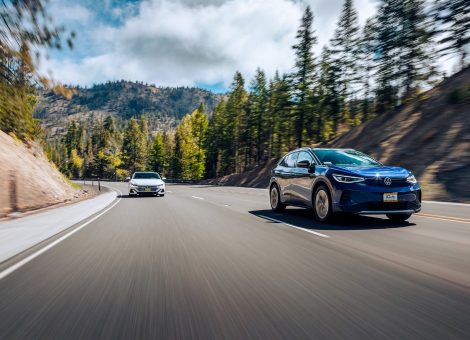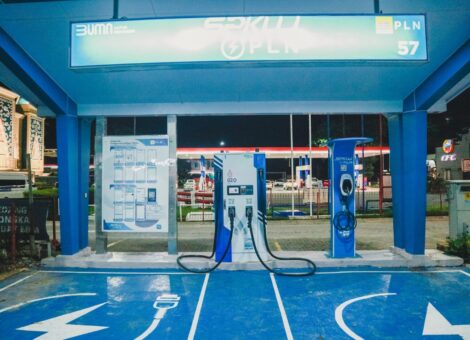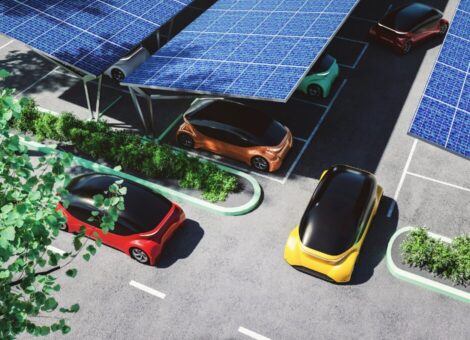2021 predictions — fuel retail, data and analytics, and the future of EVs
Growth amidst a recession
2020 was the dawn of a new decade. Yet the beginning, what many businesses were excited for, has turned plans upside down. COVID-19 has ground many businesses and the economy to a halt. But can organizations grow as margins become tighter and the impact of the recession truly kicks in?
In short — yes — they can. “Hindsight is 20/20” and, it was quite ironic that the pandemic happened in 2020 and shut down the world for an extended period of time, impacting global economies, small, and large businesses. However, we can learn from the choices we made, or were forced to make, and do things differently as we move into the slow recovery phase and look to ensure organizations remain sustainable, break-even, and even become profitable.
Businesses — particularly convenience retailers — need to think about the demands of the “new consumer” and how this changes their sales approach. For example, do consumers need to touch and feel everything in bricks and mortar stores or is online a more viable option? Do they need to enter the store or is curbside pick-up enough?
NACS, a global trade association for the fuel and convenience retail industry, reported that consumers are increasingly avoiding hypermarkets and turning to convenience stores instead. A survey of 1,828 member stores found that 52% saw an increase in grocery sales since the start of the pandemic. A similar shift has begun in the automotive sector. Lockdown restrictions implemented to control the spread of COVID-19 kept people at home, leading to online purchases skyrocketing. Tesla reacted by shifting to an online-only sales model and was the only Original Equipment Manufacturer (OEM) to increase sales in March 2020.
Ultimately, if fuel and convenience retailers are to weather the storm then they need to meet consumer needs while also reducing overheads. Tapping into data that provides those valuable insights on consumer habits is how businesses can find that balance.
Environmentally conscious consumers alone are not enough for EV adoption
Aside from Tesla, overall figures indicate that the uptake sales of EVs have remained stable throughout the pandemic, even though traditional internal combustion engine (ICE) sales have declined in many regions. Much of this is driven by the perception shift during lockdown, as many people only saw cleaner cities as a result of less driving. Yet, this is not enough for a complete EV overhaul.
Even though there are more EV models available, and we are starting to achieve price parity with some ICE models, the adoption is still limited to a certain socio-economic consumer profile — those that have access to off-street charging, or can conveniently access on-street or destination charging. Since convenience of charging is the consumer priority, consumers will pay what’s offered, especially on longer routes; we’re realistically nowhere near a point where the cost of owning an EV outweighs traditional fuel consumption. For consumer purchases of EVs to gain serious momentum, EV ownership needs to be the greater convenience.
While businesses and manufacturers can have set timelines for when ICE will stop being sold, a lot needs to happen before then. Legislation and investment is helping drive EV uptake but the infrastructure has a long way to go. Organizations need to think about the mass adoption of EVs: the who, where, and when, affordability, total cost of ownership, off-street parking and charging facilities, impact on the grid, increase in subsidies, reduction in taxes and more.
With less than 10 years until cars and vans powered wholly by petrol and diesel are off the market in the UK, it’s time businesses act. The perception of cleaner, greener air and the overall shift surrounding the environment, exacerbated by COVID-19 is not enough. If this is a sign of times to come, then we need the infrastructure in place first to direct consumer confidence towards mass adoption, especially if we are going to meet legislation changes around ICE sales. Only once the infrastructure is ready can businesses change consumer technology preferences and lay the groundwork for mass adoption. While it’s likely to be at least a decade before EVs are commonplace, fuel retailers have to cater for EV customers before then.
Diversifying fuel alternatives
This does not mean other fuel options should be ignored. In fact, fuel alternatives have been a long standing option in the automotive sector around the world. For instance, Japan is focused on hydrogen, be it with limited uptake.
The various government legislations, vehicle manufacturing, and charger provisions are all steps in the right direction, but there is still a lot to do to understand and drive down the path to a fully renewable and electric world. 2020 has seen the start of EV adoption, but businesses need to prepare for all viable options.
Even if sales increase, there will be older, fuel powered cars in use. If no new ICEs are available and EVs are not attractive to everyone it begs the question, are we actually driving towards ICE cars being held on for longer with higher emissions? In today’s complex world, with evolving markets focusing on different fuel alternatives, there is too much noise to predict exactly what type of fuel alternatives will dominate the energy industry. Realistically, the energy landscape of the nearer future — say 2030 — will be a diverse mix of alternative fuels, fossil fuels, and electric vehicles.
Fuel retailers in any market need to satisfy and retain their existing customers, all the while remaining flexible to shifting market demands and meeting government legislation. Some markets will have dramatically different mixes than others, and businesses need to begin thinking strategically about the best way to meet the demands of a varied and dynamic customer base.
— — — — — —
For more resources about how Kalibrate can help you manage the transition to EV, visit the page “All about electric vehicles“.
Read more articles about:
Electric VehiclesSubscribe and get the latest updates
You may unsubscribe from our mailing list at any time. To understand how and why we process your data, please see our Privacy & Cookies Policy
Related posts
Electric Vehicles
Strategic actions to take where EV growth erodes fuel volumes
As electric vehicle (EV) adoption accelerates, we’re beginning to see the impact on fuel volumes in markets of high...

Electric Vehicles
The rise of mobility hubs
The future of mobility hubs is not just fuel pumps with a smattering of semi-complementary retail offers. Mobility...


